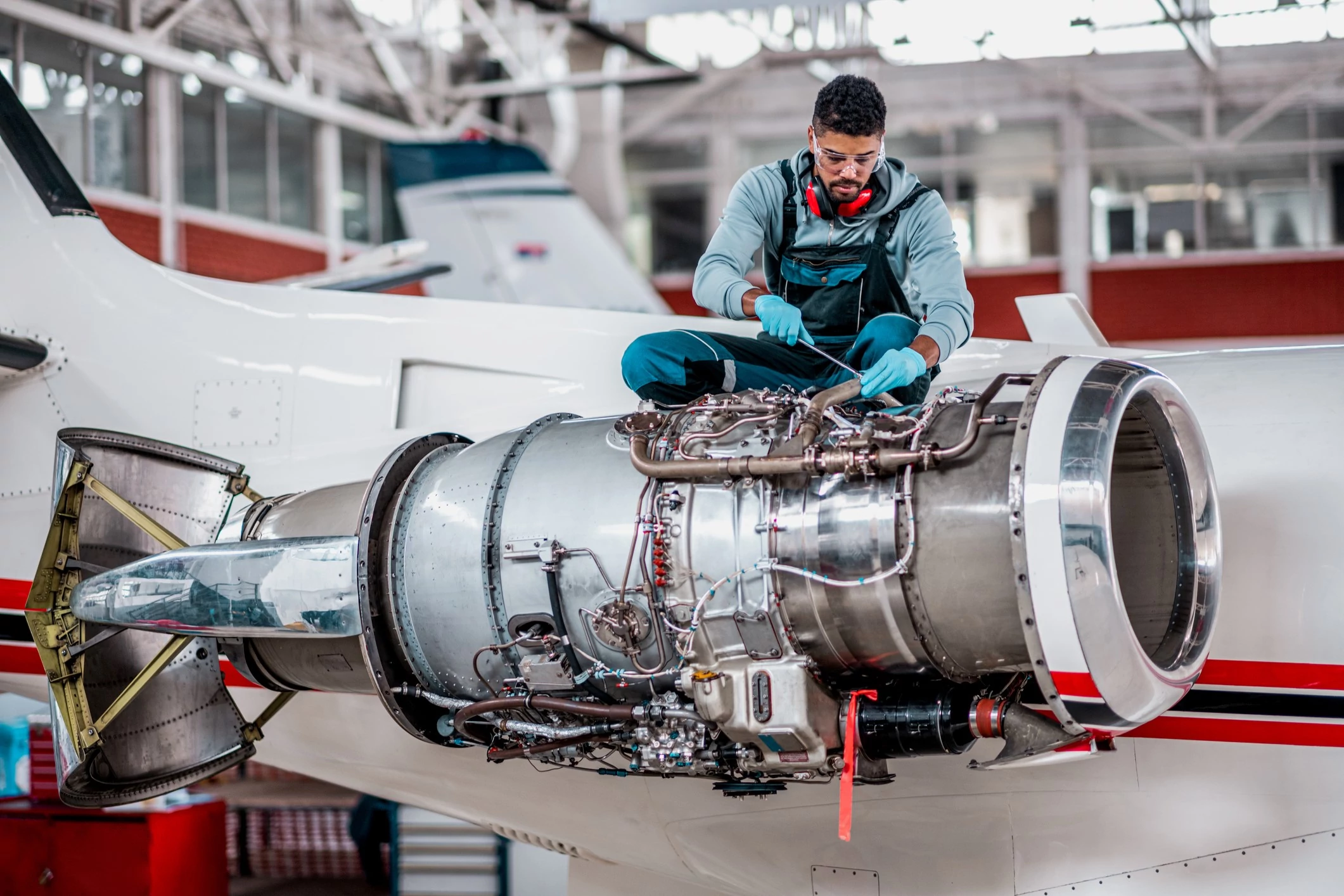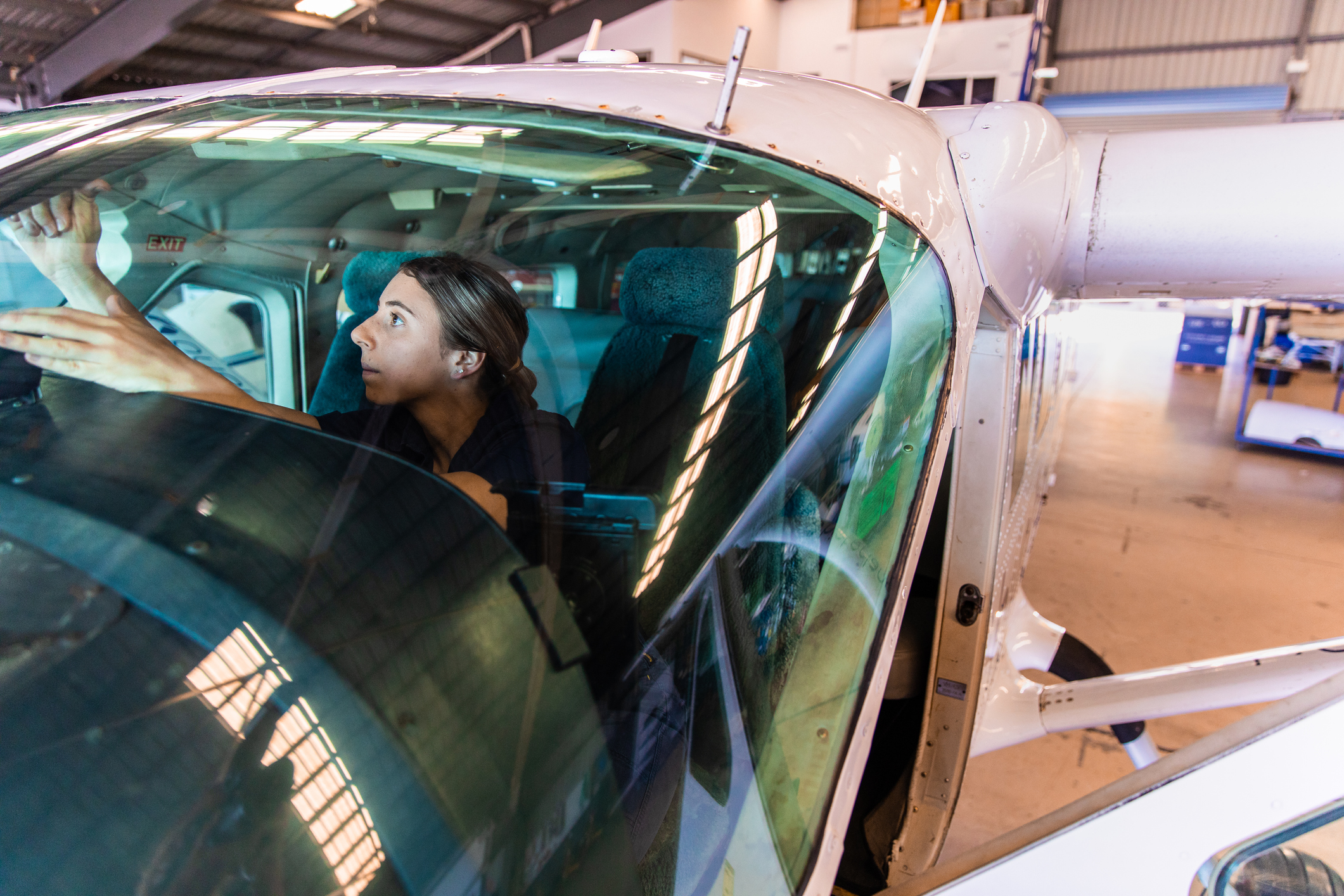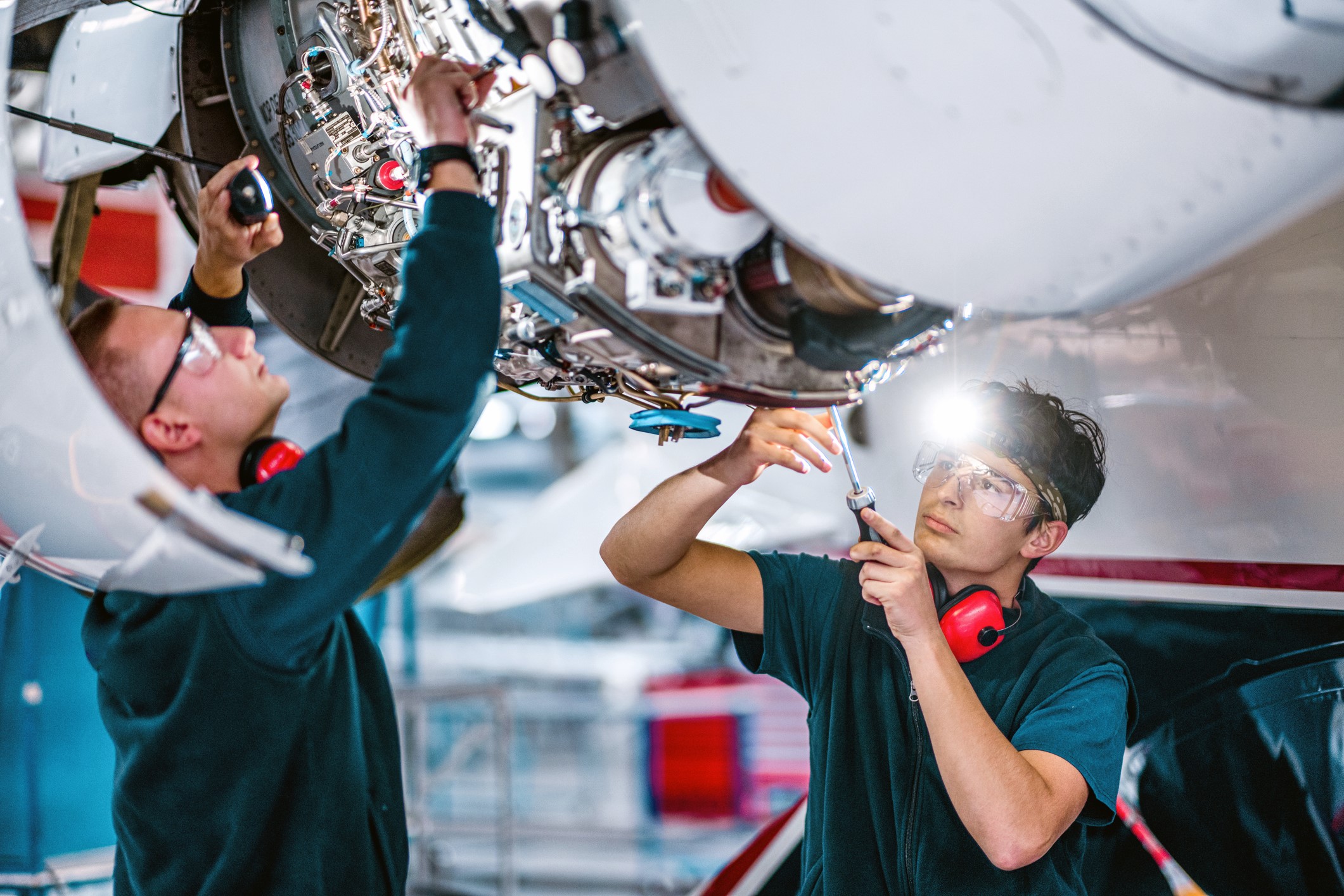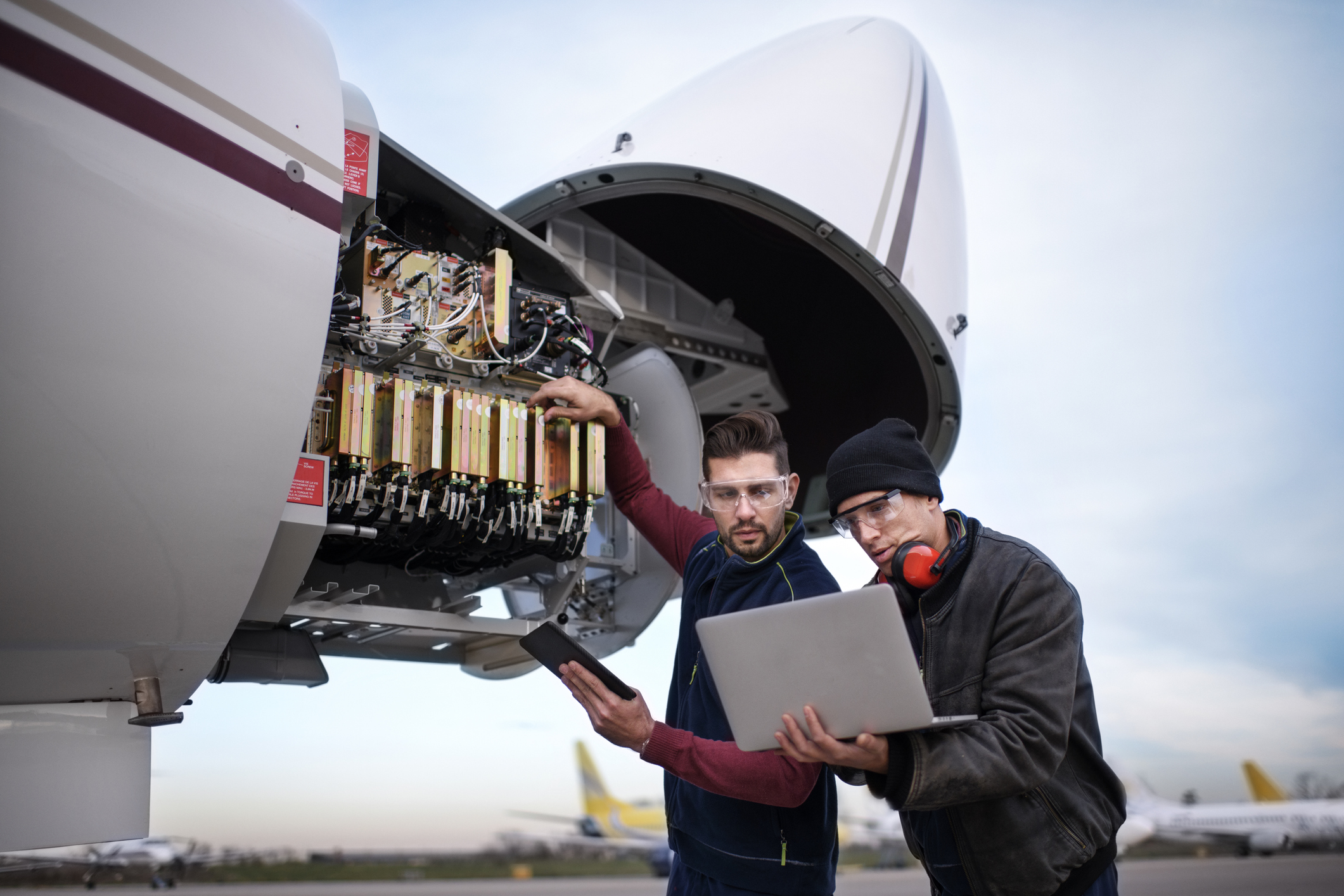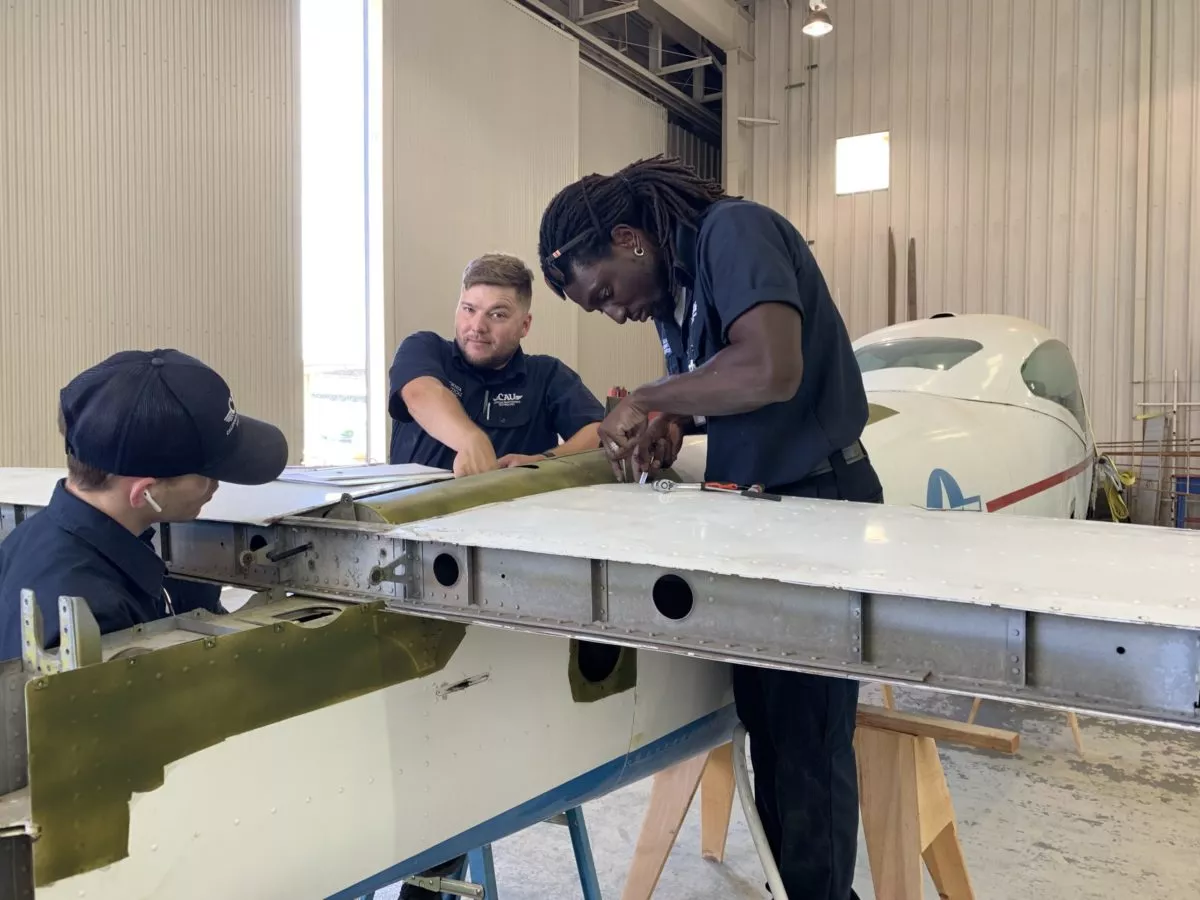Being a pilot may be the most well-known career in the aviation industry, but it is not the only one. Several people fill various roles to make sure all passengers and crew have a safe and pleasurable flight experience. Most of them work behind the scenes – including aircraft maintenance technicians.
Aviation maintenance is an industry trending towards higher demand. The role of an aircraft maintenance technician is vital to the aviation ecosystem. These individuals keep the aircraft they are responsible for operating safely and efficiently, from minor internal components to major external parts, ensuring they all work together seamlessly.
What Does an Aircraft Mechanic Do?
An aircraft maintenance technician (AMT) oversees the routine maintenance, repairs, inspections, and so forth on all the aircraft under their care, whether cargo or passenger. Airframe and powerplant (A&P) technicians are certified by the FAA and highly trained in their field.
The job of an AMT is a crucial part of the aviation industry. AMTs not only test aircraft and make repairs, but they also log notes, keep records, and manage the tools and equipment. Numerous duties and responsibilities fall under this job description.
Pros and Cons of Being an Aircraft Maintenance Technician
As with every occupation, an aircraft maintenance technician career has both positive and challenging aspects.
Pros:
- The aviation industry is growing and expected to continue to do so.
- This includes pilots, service and maintenance technicians, avionics engineers, etc.
- The aeronautic maintenance field involves learning exciting and unique skills, including staying updated on the latest aviation technology.
- There are multiple aviation sectors that need maintenance technicians (so depending on your interests, talents, and abilities, you have a range of options if you want to specialize).
Cons:
- Aviation maintenance can be a high-pressure environment.
- Aircraft repair stations, hangars, and airfields can be loud and are often fast-paced.
- This type of work can be physically demanding.
How Will You Know if Being an AMT Is for You?
Becoming an aircraft maintenance technician may not be for everyone. However, you could find this career to be very rewarding if:
- You are fascinated with technical/mechanical aspects and details and have a knack for working with them.
- You enjoy working with your hands.
- Protecting the safety of others gives you a sense of honor and pride.
- You thrive in a fast-paced environment.
- Working individually within a team atmosphere is where you are most successful.
Steps to Become an Aircraft Maintenance Technician
The FAA specifies a few basic eligibility requirements that you must meet to become an aviation mechanic. First, you must be at least 18 years of age and know how to read, write, speak and understand English. Next, you must have 18-30 months of practical experience – either obtained on-the-job (OTJ), by graduating from an FAA-approved Aviation Maintenance Technician School (AMTS; also called a “147 school”), or through completing a joint aviation/military training course.
The number of months of practical experience depends on the rating you want on your certificate: Airframe only, Powerplant only, or both. Suppose you choose to be an apprentice and get OTJ training. In that case, you should know in advance that the FAA requires your work experience to be fully documented and performed under the supervision of a certificated aviation mechanic (see FAQs section).
A diploma from a 147 school such as California Aeronautical University offers practical, hands-on experience and a comprehensive airframe and powerplant educational curriculum. Professional instruction from a certified aviation college allows you to gain all the knowledge and skills needed to complete the FAA’s written, oral, and practical tests. While in school, you may get to take classes such as:
- Electrical Theory
- Materials and Processes
- General Aviation Maintenance
- Non-metallic Aircraft Structures
- Metallic Aircraft Structures
- Composite Structures
- Aviation Law for Mechanics
- Hydraulic and Pneumatic Systems
- Airframe Systems
- Reciprocating Engine Theory and Maintenance
- Turbine Engine Theory and Maintenance
- Powerplant Systems
- Propellers and Auxiliary Power Units
The FAA Test
The final step in becoming an aircraft maintenance technician involves passing the FAA certification tests. There are three:
- Knowledge (written)
- Oral
- Practical
To receive your certification as an Aviation Mechanic with Airframe and Powerplant ratings, you will need to take and pass two additional (written) tests:
- Airframe Knowledge
- Powerplant Knowledge
If you take and pass both tests, you will receive an AMT certificate with A&P ratings. However, you can take only one test and get either an A rating for Airframe or a P rating for Powerplant.
Other Key Points You Need to Know
Finally, if you are considering aviation maintenance as a career, there are a few additional points you should know:
- As mentioned above, there are many diverse aviation sectors available that need maintenance and service technicians, including:
- General aviation
- Fixed-base operation
- Executive aircraft services
- Major airlines
- Aircraft contractors
- Charter services
- Manufacturers
- The terms aviation mechanic, aircraft mechanic, and aviation maintenance technician are used interchangeably. Although slightly different, they are usually considered to be the same.
- There is a growing list of resources and organizations dedicated specifically to aircraft mechanics and aeronautical maintenance technicians. From publications to technical updates, trade associations to job boards, and safety alerts to women’s groups, the professionals in this career field have realized the value of sharing best practices.
Aircraft Maintenance Technician Education
When you are ready to take the next step in becoming an aircraft maintenance technician, check out California Aeronautical University’s hands-on, in-person, structured program. Contact CAU today!
Ready to soar in your aviation career?
Mr. Matthew A. Johnston has over 23 years of experience serving various roles in education and is currently serving as the President of California Aeronautical University. He maintains memberships and is a supporting participant with several aviation promoting and advocacy associations including University Aviation Association (UAA), Regional Airline Association (RAA), AOPA, NBAA, and EAA with the Young Eagles program. He is proud of his collaboration with airlines, aviation businesses and individual aviation professionals who are working with him to develop California Aeronautical University as a leader in educating aviation professionals.
